Great Design Plant: Corylus Americana Awakens the Woodland Garden
American hazelnut (Corylus americana) is one of the first native shrubs to flower in spring. Before the leaves emerge, the separate male and female flowers begin to develop on the bare branches. The male flowers, in particular, put on a colorful display. The brown catkins elongate as the pollen matures and turn bright yellow and dangle from the branches. American hazelnut’s robust form and overall reliability make it an excellent native shrub to use as an herbaceous hedge, in a naturalized planting for wildlife, or in tough sites where little else will grow.
If you plant American hazelnut, I think you will be pleasantly surprised with the form, growth rate, bright yellow male flowers in early spring, drought tolerance and coppery fall color.
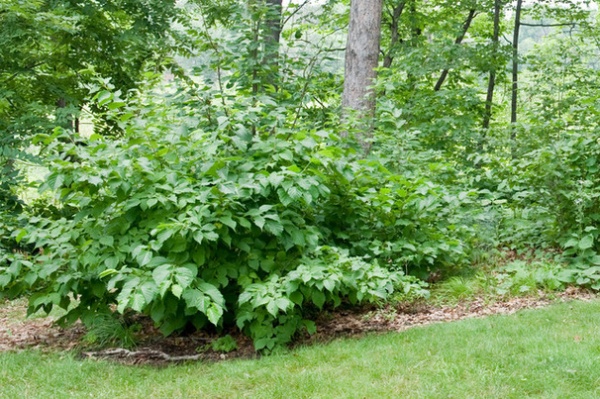
Botanical name: Corylus americana
Common names: American hazelnut, American filbert
Origin: Native to eastern North America, from Manitoba, Canada, south to Oklahoma, east to Quebec and Maine in the north, Georgia in the south
Where it will grow: Hardy to -50 degrees Fahrenheit (USDA zones 2a to 8b; find your zone)
Typical plant communities: Dry woodland openings, upland slopes, woodland edges, riparian edges or in old fields
Soil requirement: Wet-mesic to dry-mesic, sandy loam to clay soil
Light requirement: Full sun to partial shade
Mature size: 10 to 16 feet tall and 6 to 10 feet wide
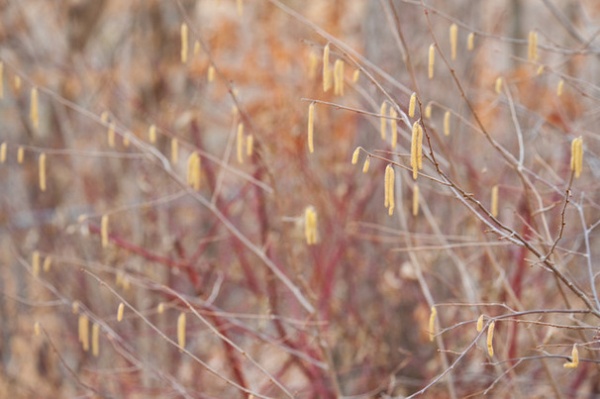
Benefits and tolerances: Tolerates most soil types except extremely dry soil; relatively shade tolerant — grows best in full sun in moist sites, tolerates partial shade in medium to dry sites
Seasonal interest: As the male flowers mature before the plant leafs out in spring, the catkins elongate and turn bright yellow as pollen is released; these catkins dangle from the bare branches and tremble with a slight breeze; the robust, coarse leaves turn yellow, orange, or copper hues in the fall.
When to plant: American hazelnut can be planted in spring or in the fall from any size container
Shown: Male flowers dangling from the bare stems, releasing pollen into the wind
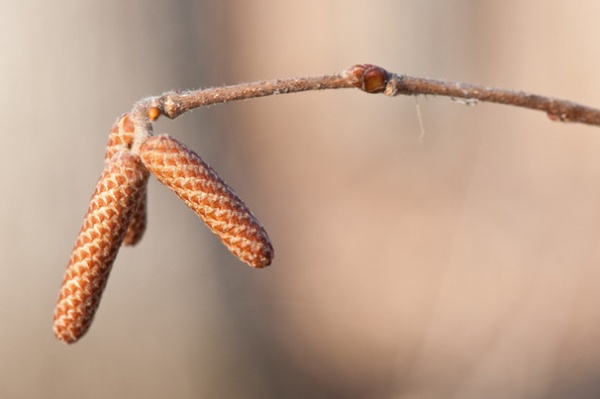
Distinguishing traits. American hazelnut provides the most garden interest in early spring, when the flowers emerge before the leaves come out. Flowering often occurs in spring before other woodland wildflowers emerge, filling the garden’s sunnier parts.
Large clusters of nuts develop after flowering; these nuts (filberts) are covered in two green bracts. When the nuts are near maturity, the bracts turn yellow to golden brown, holding inside the brown filberts.
The fall color can be spectacular; the dark green leaves transition to orange, yellow and coppery hues.
This native shrub has a robust form, suckering from the main stem cluster outward, forming a larger and larger cluster as the shrub matures. Its large leaves are similar in appearance to witch hazels (Hamamelis spp) with a coarse texture and finely serrated margin.
Shown: Male flowers on a stem during the winter. Wild turkeys and grouse will feed on these catkins during the winter.
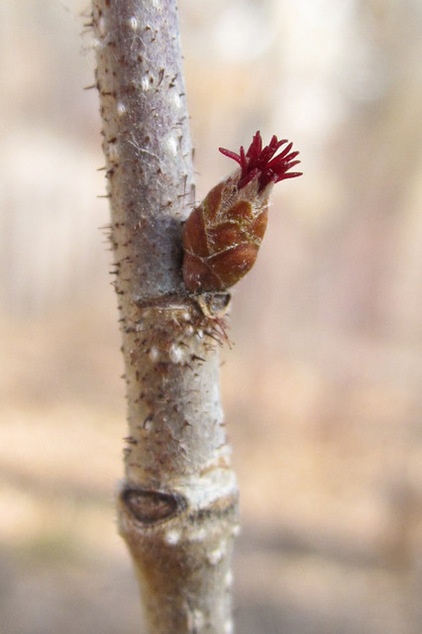
How to use it. American hazelnut is best used naturalized in a large garden along the edge of a woodland or shade garden, as a hedge to provide screening or to soften fencing or other structures. Slope stabilization in locations where the mature height will not restrict desired sight lines is another good use for this shrub.
Shown: the bright red stigmas of a female flower on the stem ready to receive pollen
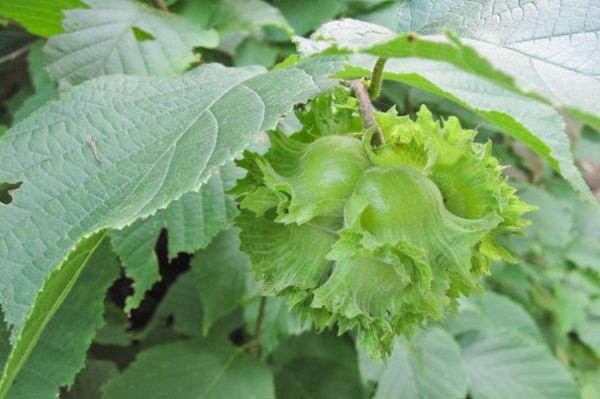
Planting notes. American hazelnut thrives in average, loam soils with average moisture. In the wild it can be found growing on upland slopes, or in moist soil next to wetlands, creeks or rivers.
The new, small stems are browsed by rabbits. Place plastic tree protection on the stems before snowfall to prevent browsing; remove the covers in spring. The nuts are sought out by squirrels, deer, woodpeckers, wild turkey and pheasants. Turkeys and grouse also feed on the male catkins during the winter months.
Shown: a developing cluster of nuts
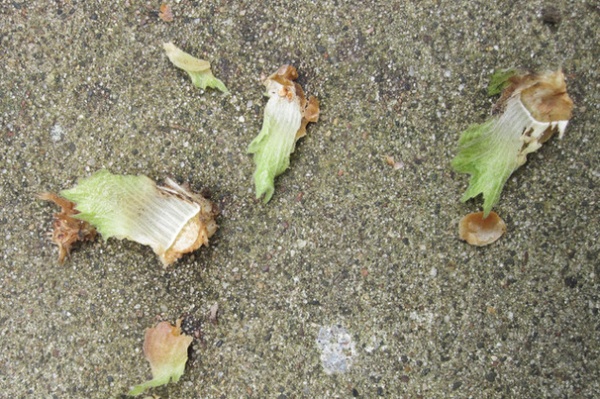
Pollinator notes. American hazelnut flowers are wind-pollinated, unlike the majority of native flowering shrubs, which are insect-pollinated. Each plant has both separate male and female flowers. These flowers open before the leaves emerge; pollen can be transported by wind more efficiently if there are no leaves in the way.
There are few plants at ground level in early spring that are relying on wind for transporting pollen, ensuring that pollen from other plants will not clog up the works (e.g. female flowers receiving pollen from many kinds of plants). Flowering also occurs when few or no pollinators are active due to cold or fluctuating temperatures, so wind pollination ideal.
Shown: the bracts from a cluster of nuts left behind by squirrels
More:
Learn more about gardening with native plants in your area
7 Great Container Plants for Early-Spring Appeal












